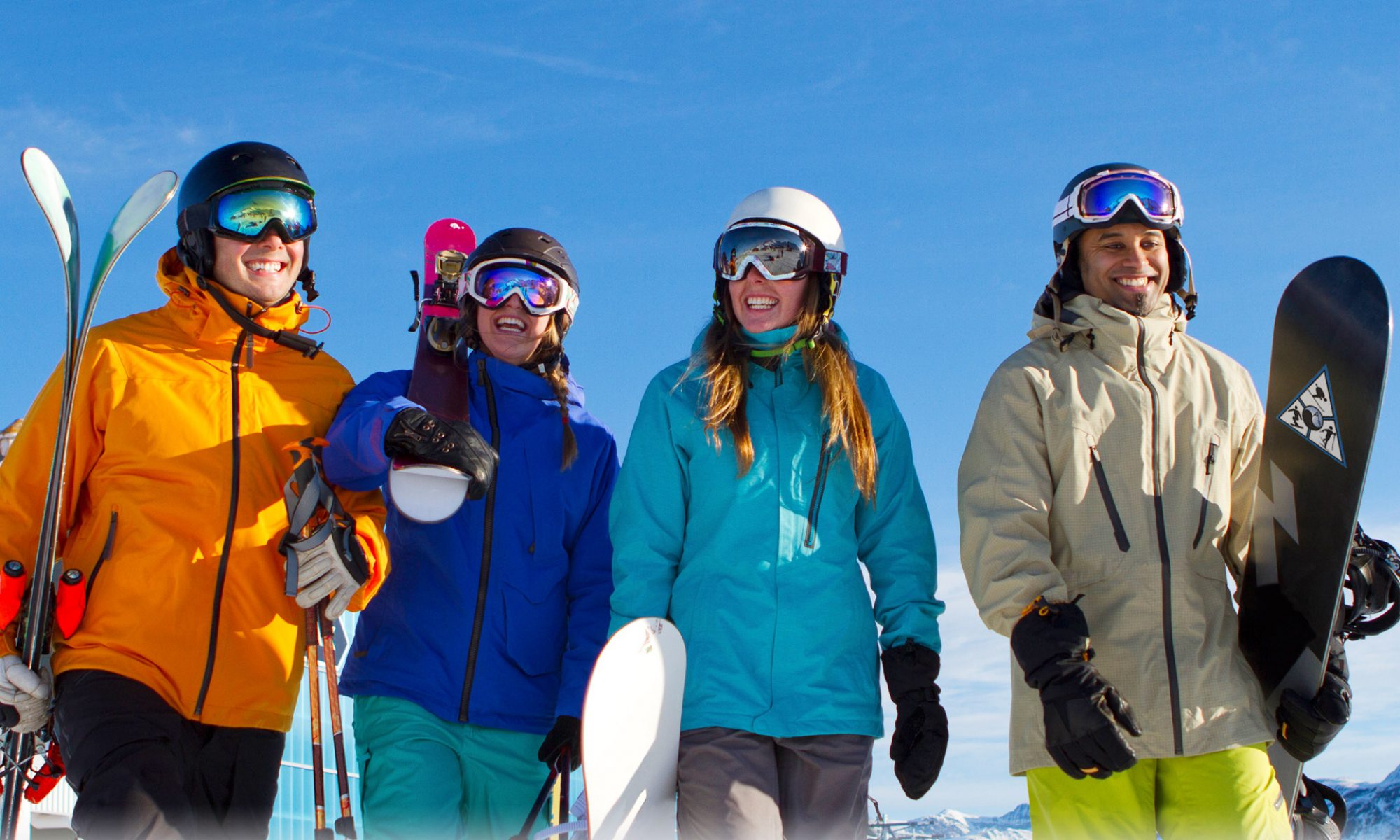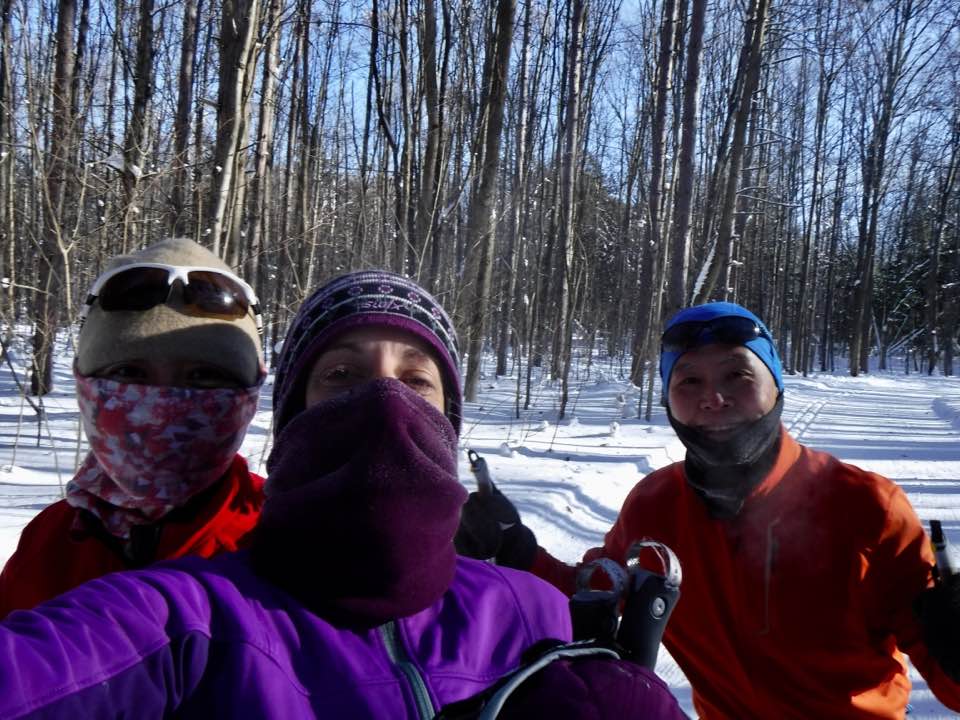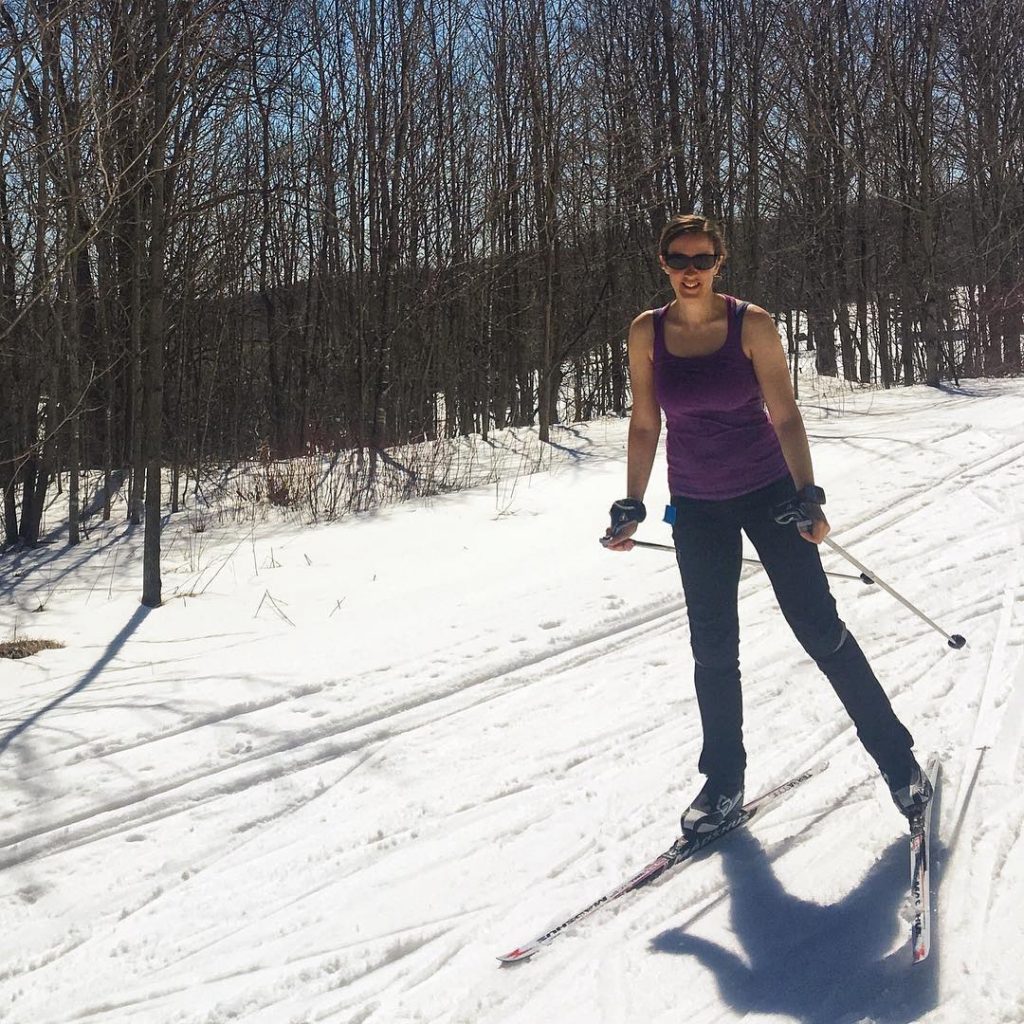We’ve talked about equipment; now it’s time to talk clothing. The right clothing will keep you warm and comfortable whether you’re cross-country skiing or snowshoeing.
Cross-country skiers dress a lot like runners. You create a lot of heat when you ski, so you actually don’t need a ton of clothing. Do not dress like an alpine skier! The key is warm, breathable layers of varying thicknesses that wick away moisture. You can combine these layers depending on the temperature. Merino wool or synthetics are best; do not wear cotton, as it will retain moisture and make you cold.
Suggested items for skiers, from head to toe:
- Toques. Keep that head warm!
- Buffs/neck warmers for cold days (buffs can also be transformed into hats).
- Sunglasses.
- Top layers of varying thicknesses (it’s good have a thin layer, a mid layer, and a heavy layer that you can mix and match as the temperature dictates).
- A jacket that can cut the wind. There are cross-country specific jackets of varying weights. It’s good to have one light weight jacket for spring, and a heavier jacket for winter. These are a good investment!
- Pants. Winter running tights or cross-country specific pants (both will often have wind resistant front panels) will work just fine. Do not wear jeans! Bulky snow pants will be too warm.
- Add long underwear for really cold days. Again, wool or synthetics.
- Wool socks. Thinner socks for warmer days, thicker socks for colder days. I love my knee-length merino wool ski socks!
- Gloves. A thin pair for warm days, thicker pair for cold days. For really cold days, mitts are more effective.
- Sunscreen and lip balm.
Rule of thumb: You should be chilly before you start. If you are already warm, you will overheat when you are moving.
The principles are the same for snowshoers, but because you are moving at a less intense pace, you may need thicker layers, a heavier jacket, and you may want to wear snow pants (or layer with long underwear).
Remember that bodies are different, so it will take some experimentation to figure out what works for you in different conditions. Just remember the main principles – technical layers (no cotton!), wind resistant outer layers, and cover those sensitive extremities (face, ears, hands, toes) when the mercury really drops!
(The above demonstrates why layers are key…you can ski in -30 in January or +12 in April!)



